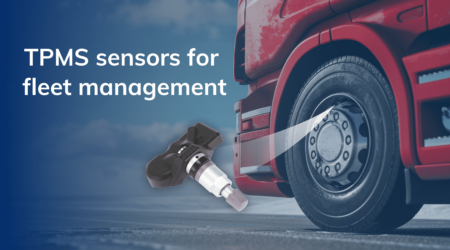Benefits of Using a Sensor for Tyre Pressure Monitoring

The Turning Point: Learning from an Incident
One evening, a fleet manager came across a news story about a tragic accident involving a commercial vehicle. The cause was a severely under-inflated tire that led to a blowout and a series of unfortunate events. This incident struck a chord with the manager, as it became evident that such occurrences could happen to any fleet.
The news report explained that the accident could have been prevented with proper tire maintenance and monitoring. Interested and concerned, the manager began researching ways to prevent similar incidents in their fleet.
Discovering the Role of TPMS
In the process, the manager discovered Tyre Pressure Monitoring Sensors (TPMS). These sensors provide real-time data on tire pressure, alerting drivers and fleet managers to any deviations from the optimal range. This proactive tool can prevent accidents by ensuring that tires are always properly inflated.
Recognizing the potential benefits for safety, cost savings, and efficiency, the manager decided to implement TPMS in their fleet. They were particularly interested in understanding how TPMS could impact fuel consumption and tire lifespan.
 Key Benefits of TPMS for Fleets
Key Benefits of TPMS for Fleets
Enhanced Safety: Ensuring the safety of drivers and vehicles is a top priority in fleet management. With TPMS installed, fleets receive immediate alerts if tire pressure levels fall outside the threshold range set by the manager’. This allows for quick response to issues before they escalate into dangerous situations, reducing the risk of accidents.
Cost Savings: Maintaining optimal tire pressure can lead to considerable fuel savings. Under-inflated tires increase rolling resistance, which results in higher fuel consumption. By keeping tires properly inflated, TPMS improves fuel efficiency, resulting in significant cost savings over time.
Extended Tire Life: Proper inflation also helps extend the lifespan of tires. TPMS helps distribute wear evenly across the tire surface, preventing premature failures and reducing the need for frequent tire replacements. This not only saves money but also minimizes the environmental impact associated with tire disposal.
Reduced Downtime: Unexpected tire failures can lead to significant downtime, disrupting schedules and causing delays. These sensors for tyre pressure monitoring provides early warnings of potential tire issues. Additionally, it allows planning for preventive maintenance and avoiding unexpected breakdowns. This proactive approach keeps fleets running smoothly and on schedule.
Regulatory Compliance: In many regions, regulations require commercial vehicles to be equipped with TPMS. Complying with these regulations not only avoids potential fines but also demonstrates a commitment to safety and best practices. Additionally, the data collected by TPMS can be used to generate reports that demonstrate compliance with safety standards.
Improved Fleet Performance Monitoring: The data collected by TPMS can be integrated into fleet management systems, providing valuable insights into vehicle performance and maintenance needs. Fleet managers can use this data to spot trends, fine-tune maintenance schedules, and make informed decisions about vehicle replacements and upgrades. This data-driven approach enhances overall fleet efficiency and effectiveness.
The Impact of TPMS
After implementing TPMS, many fleet managers notice significant improvements across their operations. The system’s real-time alerts and data analytics help maintain optimal tire conditions, enhancing safety and efficiency. The reduction in fuel costs and tire replacements contributes to overall profitability.
This general success story serves as a testament to the benefits of TPMS. By learning from past incidents and taking proactive measures, fleet managers can successfully improve safety, efficiency, and cost-effectiveness. It highlights the value of staying informed and investing in technology that enhances fleet management.
Conclusion: A Smart Investment for Fleet Efficiency
Investing in Tyre Pressure Monitoring Sensors is a practical decision for fleet managers looking to enhance safety, efficiency, and cost-effectiveness. By preventing unforeseen tire issues and ensuring optimal vehicle performance, TPMS is an invaluable tool in fleet management. Whether for logistics, public transportation, construction, agriculture, or emergency services, TPMS offers significant benefits that can transform fleet operations.




